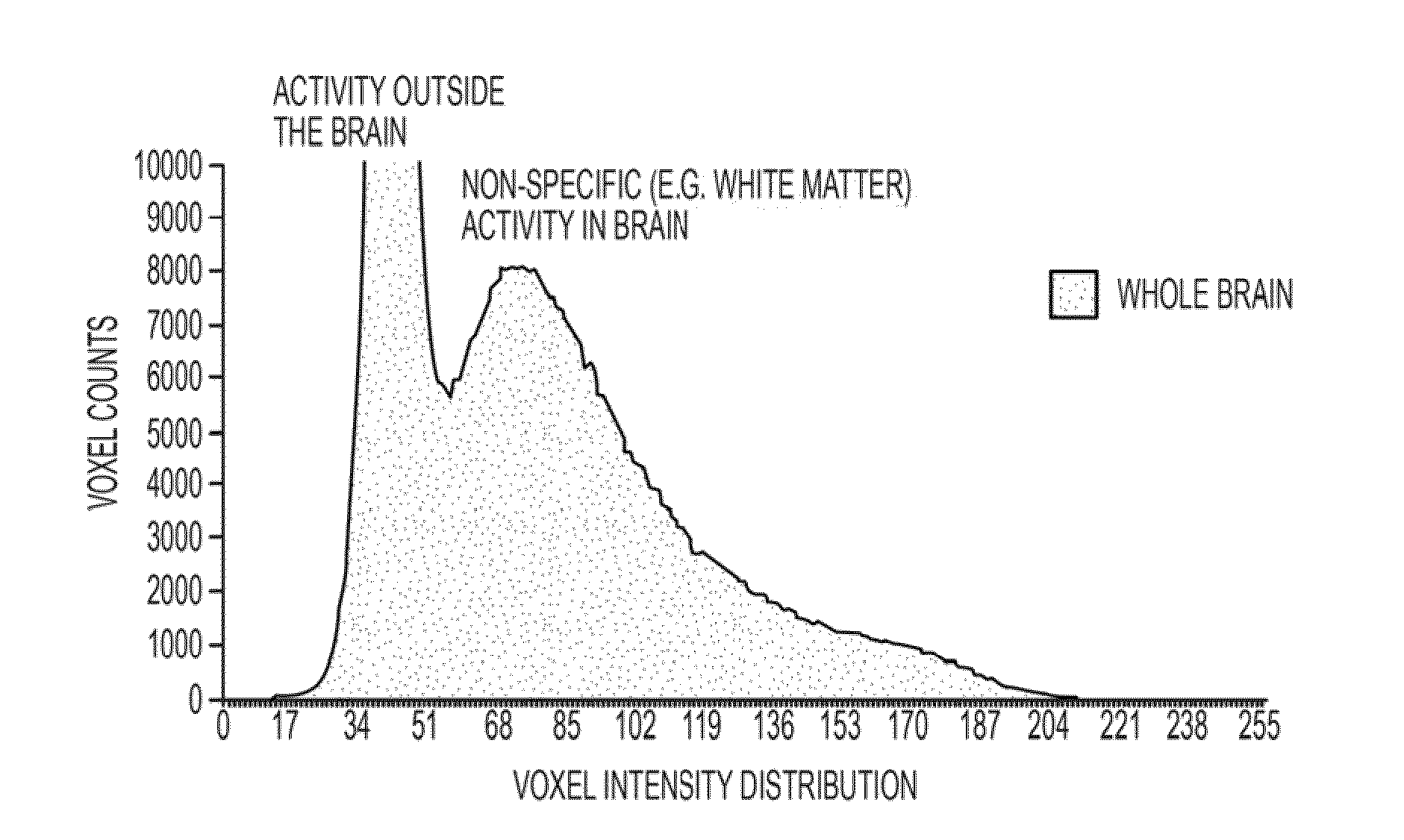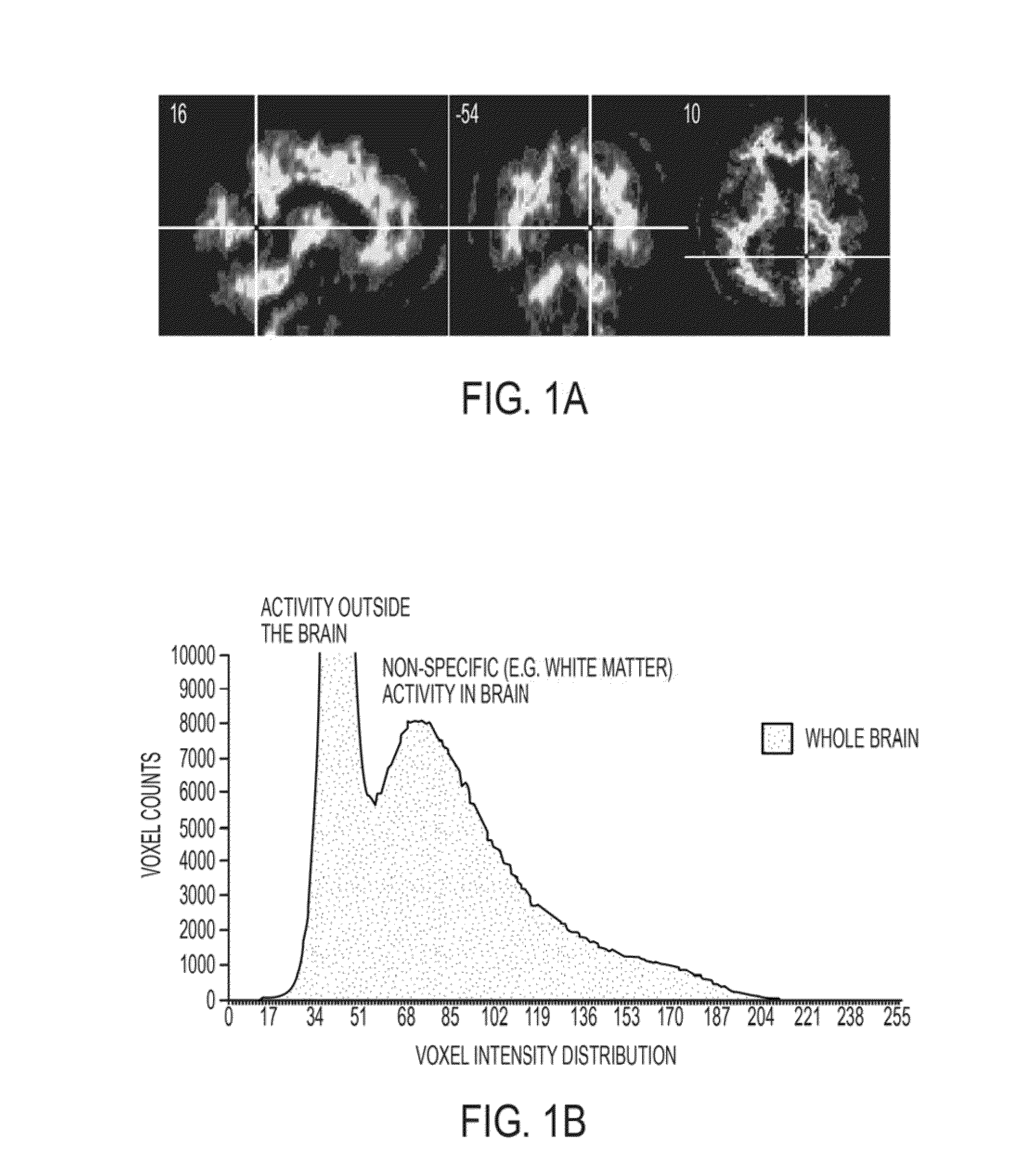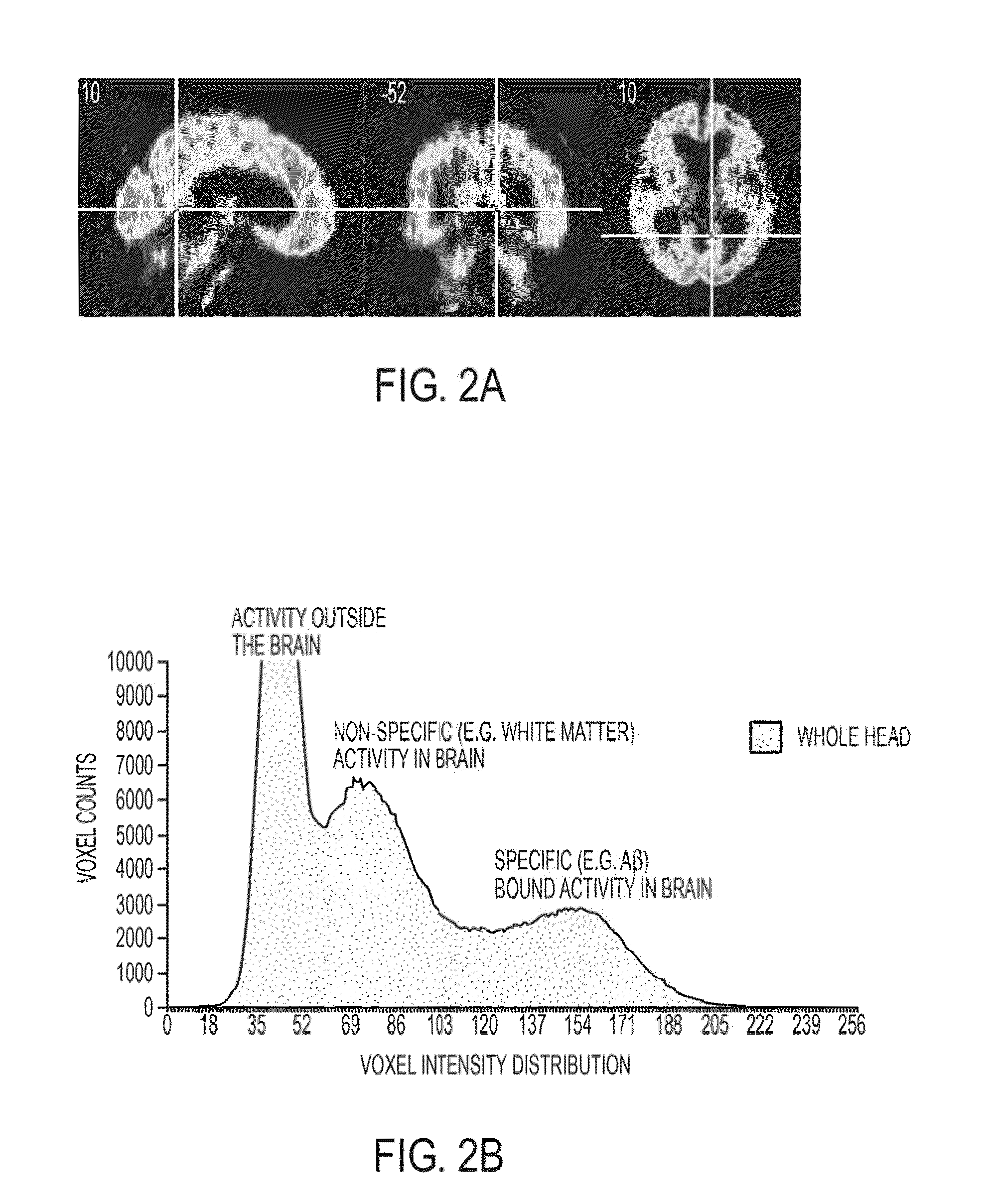Histogram-based analysis method for the detection and diagnosis of neurodegenerative diseases
a neurodegenerative disease and analysis method technology, applied in the field of humanistogram-based analysis method for the detection and diagnosis of neurodegenerative diseases, can solve the problems of mixed dementia traditionally very difficult to diagnose, affecting behavior, and unknown time of onset in living subjects
- Summary
- Abstract
- Description
- Claims
- Application Information
AI Technical Summary
Benefits of technology
Problems solved by technology
Method used
Image
Examples
example 1
Evaluation of PET Image Histograms for the Differentiation or Diagnosis of Subjects with Alzheimer's Disease Pathology versus Normal Control Subjects
[0080]The histogram and histogram data were generated using the MRIcroN histogram application. The MRIcroN program was applied to selected PET scan images to determine the number of voxels (bin count on the y-axis) at a given voxel (or pixel) intensity value (x-axis) for each scan. A histogram was generated for each PET scan wherein the intensity level (on the x-axis) corresponds to the concentration of amyloid plaque (represented by radioactivity present in a given voxel). Pixel / voxel intensities ranged from 0-256 (28) for gray scaled images. For example, if a histogram displayed a value of 3000 on the y-axis for a value of 130 on the x-axis it was concluded that 3000 voxels had an intensity of 130.
[0081]Evaluation of the PET image histograms of 18F-AV-45 (an amyloid-plaque binding radiopharmaceutical) revealed two distinct histogram f...
example 2
Measurements of the Relative Amount of Amyloid Plaque in Normal Subjects and Subjects with Amyloid Pathology Utilizing a Derivative Curve Separation Method Applied to the Image Histogram
[0083]18F-AV-45 brain PET scans were analyzed using histograms of amyloid-pathology-negative and amyloid-pathology-positive patients. The separation of the lower intensity, non-specific radiopharmaceutical voxel bins from the higher intensity voxel bins was accomplished by identifying the inflection point on a descending slope of a histogram curve (based on a first derivative analysis), which enabled the histogram to be divided into two parts, as shown in FIG. 6. FIG. 7 is a graph of the ratios of the areas under the histogram curve for post-inflection point (i.e. higher intensity specific radiopharmaceutical binding) relative to pre-inflection point (i.e. lower intensity non-specific radiopharmaceutical binding) voxel populations from the amyloid PET scans of cognitively normal and Alzheimer's disea...
PUM
 Login to View More
Login to View More Abstract
Description
Claims
Application Information
 Login to View More
Login to View More - R&D
- Intellectual Property
- Life Sciences
- Materials
- Tech Scout
- Unparalleled Data Quality
- Higher Quality Content
- 60% Fewer Hallucinations
Browse by: Latest US Patents, China's latest patents, Technical Efficacy Thesaurus, Application Domain, Technology Topic, Popular Technical Reports.
© 2025 PatSnap. All rights reserved.Legal|Privacy policy|Modern Slavery Act Transparency Statement|Sitemap|About US| Contact US: help@patsnap.com



